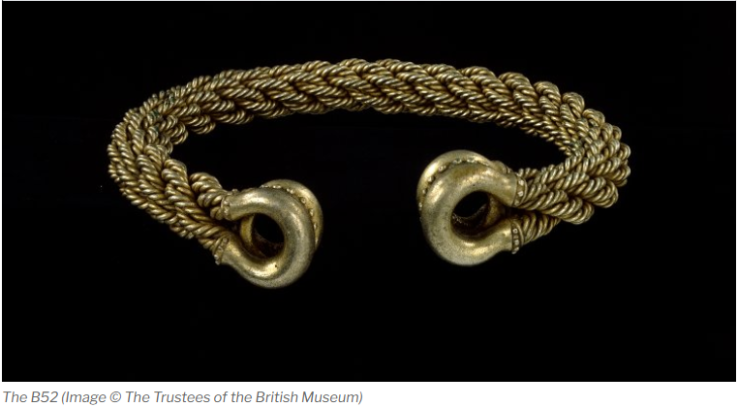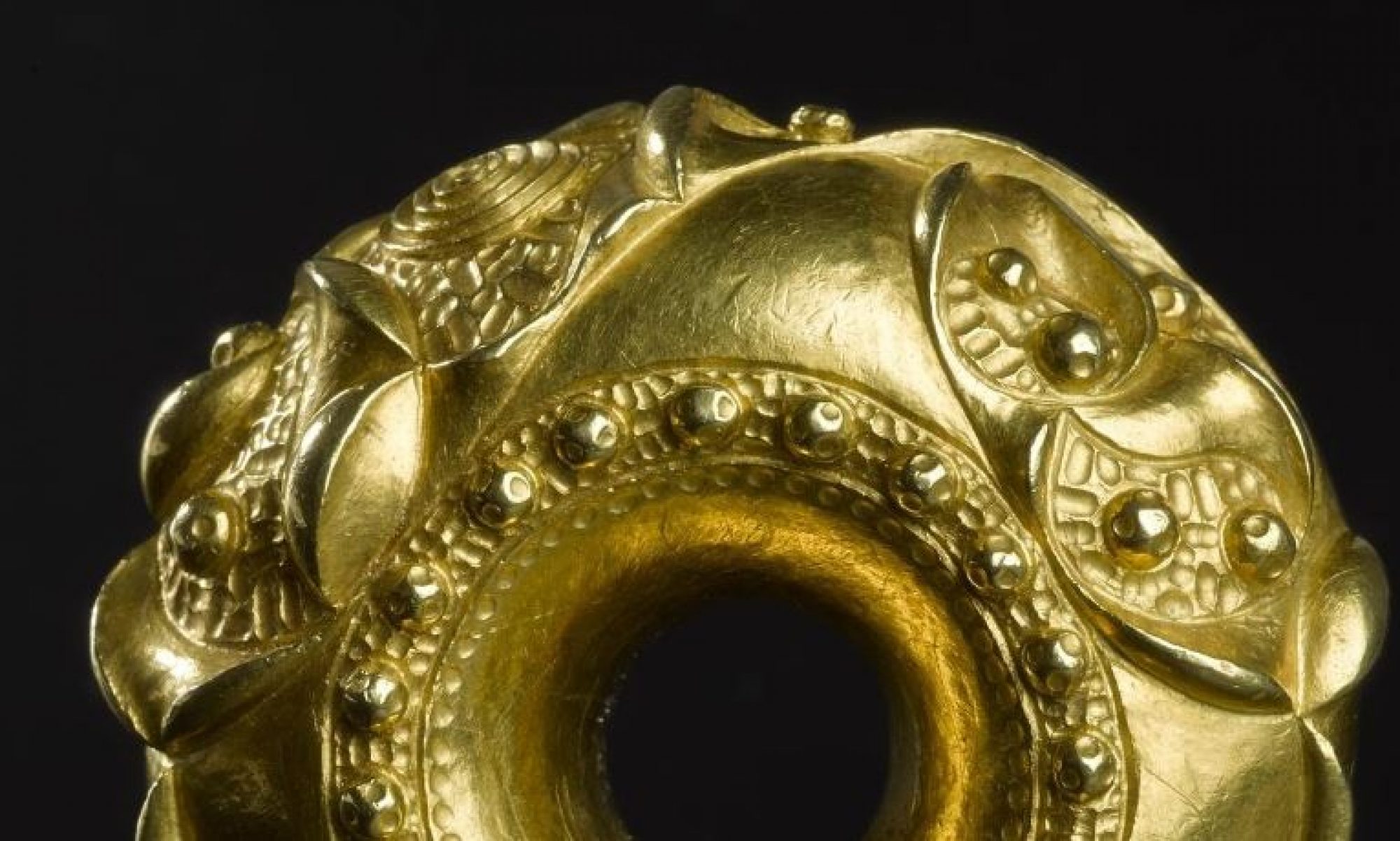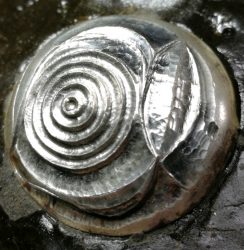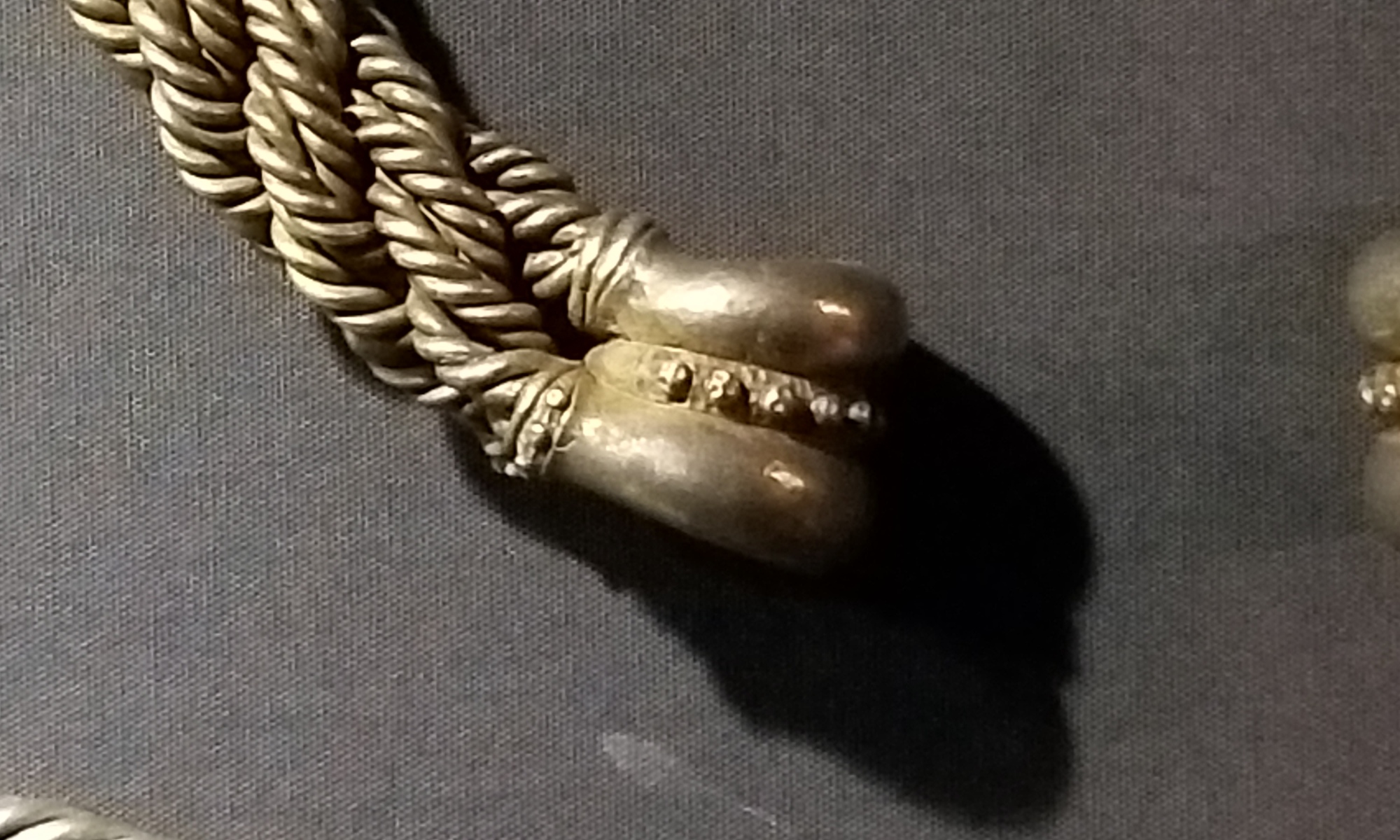When we look at torcs, the first stage of analysis usually involves photos. We have a lot of photos: my Kindle Fire currently contains about 6000 of them, cribbed from websites and online catalogues, or taken by Roll and myself. That’s a lot of pics.
By going through these photos on a regular basis we tend to notice things: usually it’ll be because we’ve seen something elsewhere and are looking for comparable examples, but often it’s just because you suddenly spot something you haven’t seen before and start digging a bit deeper.
Often this happens with photos you think you know well and it is a constant surprise to look at something for what feels like the millionth time, and yet see something new. But that is what we are learning rapidly about torcs: there is ALWAYS something new to see or learn and that is why it is so important to keep coming back to images, to keep revisiting the data.

The torc that is the subject of this blog is no exception: known to us as ‘The B52’ (thanks to its position in the Norwich Castle Museum display case), it’s ‘pedigree’ name is more formally given in the British Museum catalogue as accession number 1991,0407.15.
Found in the early 1990s (hence the 1991 BM accesssion code) during Ian Stead and the British Museum’s excavations at the site of Ken Hill in Snettisham, this torc is described by the British Museum catalogue as being from Hoard H. A little digging in some research papers – kindly sent to us by Ian Stead – gave us a little more information.
His notes record that this torc was one of 11 torcs, found in a single small pit, only some 22cm wide. The torcs in the hoard had been divided into two deposits, with The B52 placed at the top of the lower hoard and being described, by Stead, to be the most gold rich torc in the hoard. It’s placing and gold content would suggest it was important within this hoard. Stead also described how this torc had been compressed into the pit, and ‘sprang open to resume its original shape as soon as it was removed’.
Unfortunately, with the Snettisham excavation still as yet unpublished, and with no known photos of this hoard in the public domain, this is where the contextual trail for this torc must at present end.
Back to the torc itself. The British Museum catalogue photos were not overly helpful, however, photos from a previous trip to Norwich Castle Museum yielded some results. As we always do, we had taken a number of photos of torcs in cases, and this included The B52. Luckily these photos, although not ideal, allowed us to have a closer look at the tooled decoration, which turned out to be rather familiar….

As can be seen in the photo above, the tooling on the terminals is irregular, but not so irregular that there are not patterns. Those patterns have been recognised by us on two other torcs: the Newark and Netherurd terminals (and were the subject of our first paper – if you don’t have institutional access, please ping me and I’ll send an offprint).
Sure enough the motifs on the The B52 and Netherurd and Newark appear to be the same, with Motifs 3, 5 and possibly 4 from Newark and Netherurd visible on The B52 (see image below). From previous comparative work for the paper, these motifs are utterly different to the tooling marks found on any other Iron Age artefact be it mirrors, torcs, horse related artefacts, swords, etc. In addition, the order of tool strokes, size of the dummy rivets, width of decorative bands and tools used appears comparable.

Having looked at the tooling, we next looked more generally at the torc. What other clues might it yield?

Firstly, the overall impression. Despite being ‘a bit clunky’ at first sight, when looked at closely, the torc is a work of great quality and talent: the wire neck ring is almost perfect, with twists of wires seamlessly twisting around each other in perfect arrangements of equal width. This is no mean feat and, as any craftsperson will attest, very difficult to achieve! In addition, the description of the neck ring springing back into shape when removed from the hoard hole, suggests that this was craft that was built to last: good gold alloy capable of withstanding 2000+ years in the ground.

Next, the terminals. These are traditionally described as being ‘cushion’ terminals although close examination of The B52 has suggested that the terminals in this example are perhaps quite different to what has been previously assumed. Initially, we believed these to be overcast examples, similar to those discussed in a previous blog HERE however, close examination of photos would suggest that the terminals of The B52 may in fact be separately cast before being attached. The reasons for this assumption are:
- The width of the terminals, particularly in the waisted terminal ‘neck’ just above the collar, does not allow space to have wires contained within.
- There is no evidence of smearing/overcasting ‘overlaps’ on either terminal as can be seen in other ‘cushion’ or overcast torcs.
- The terminal joins with the wire neck ring are very ‘clean’. This is usually associated with separately cast terminals: cast-on terminals usually show evidence of metal run.
- The terminals are perfect: in all known cast-on terminals examples there are faults.
In addition, the terminals appear to have a multi-component construction which we currently believe to have been achieved as follows:
- The wires were twisted into four main bundles (we are currently uncertain how many wires went into each bundle).
- Two horseshoe shaped terminals were created for each terminal (so four terminals in total).
- Each horseshoe terminal was attached to two of the bundles of wire at each end of the neck ring giving two horseshoe shaped terminals per end of neck ring.
- An additional ring of alloy (the section with the tooled lines and dummy rivets) was added between the two horseshoe terminals and ? soldered into place.
(It is also possible that the terminals were soldered to the wires when in complete form thus bypassing Stage 3 above)
Interestingly, the added ring of alloy is very similar in form and position to that added to fill the intentional void in the Newark casting (more on this in our Historical Metallurgy paper HERE), but the added ring can clearly be seen in this x-ray image of one of the Newark terminals:
Conclusions
From the evidence above, we would therefore tentatively argue that:
- The Newark, Netherurd and The B52 torcs were made/finished by the same hand.
- With these torcs coming from Nottinghamshire, Peeblesshire and Norfolk, this has obvious implications for the making, trade and exchange/gifting of torcs and, once again, suggests that torcs and/or their makers were moving long distances in the Iron Age.
- In addition, the finding of three torcs by the same maker/finisher would suggest that the making of such torcs was temporally restricted as all three torcs must have been the product of a single goldsmith’s working life time which is likely to be no more than 30-50 years.
- Three torcs by the same hand might also suggest that torc making – particularly in the best examples – was a far more specialised craft than has previously been assumed: the chances of finding three torcs by the same maker would be unlikely, although not impossible, had their been many thousands in circulation in the Iron Age.
However, it should be noted that without having the torc ‘in our hands’ this is, although we’re pretty confident, still conjecture. We will be updating the blog when we have seen the torc: will our initial thoughts be correct?
Watch this space…





Fascinating article. One query – and I’m not sure if this is my lack of familiarity with the terminology, or perhaps a typo? Where you write “particularly in the wasted terminal ‘neck’ just above the collar” should that be waisted?
LikeLike
My error! Should be waisted! Will change now. Good spot!! 😂
LikeLike